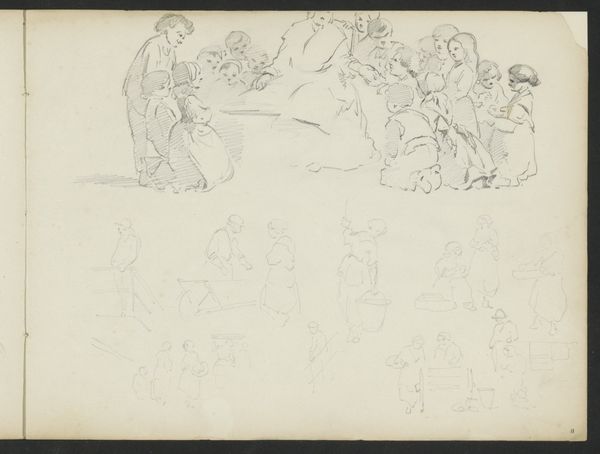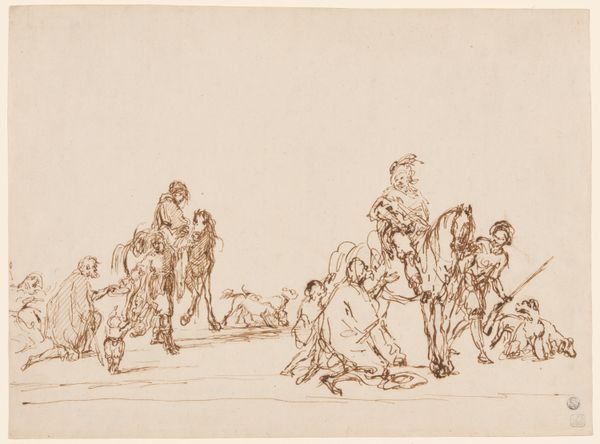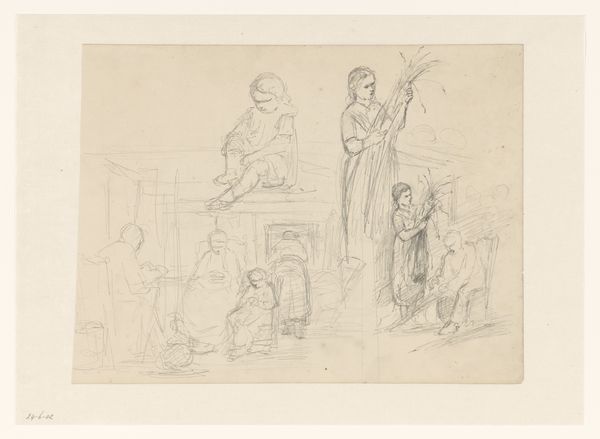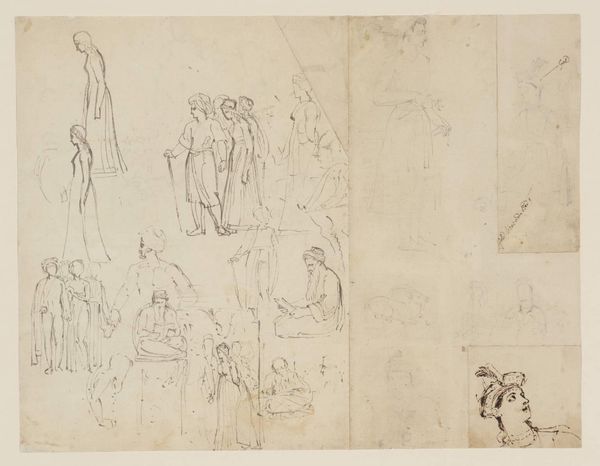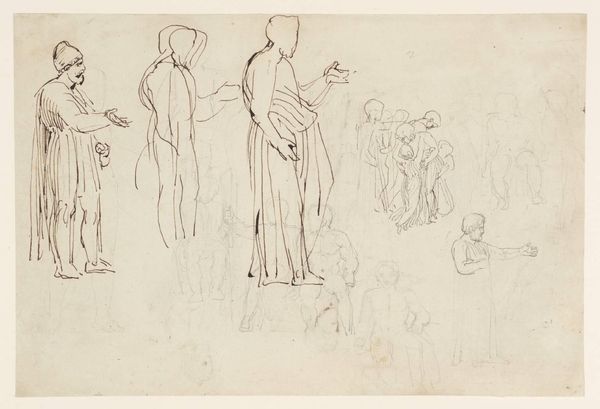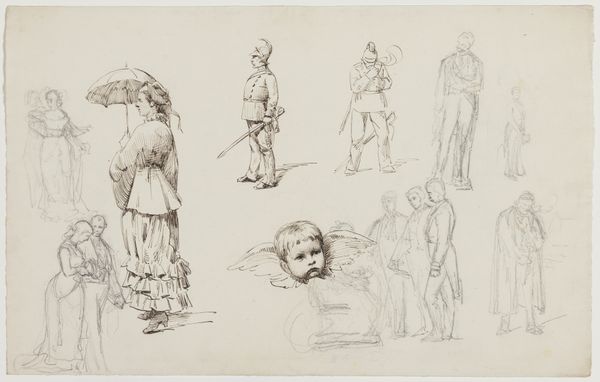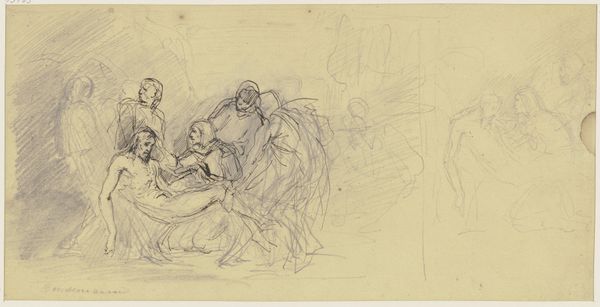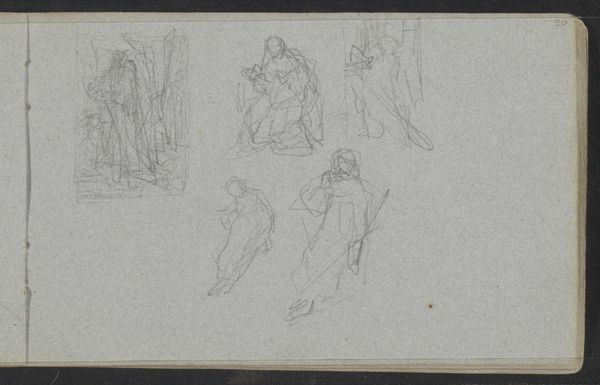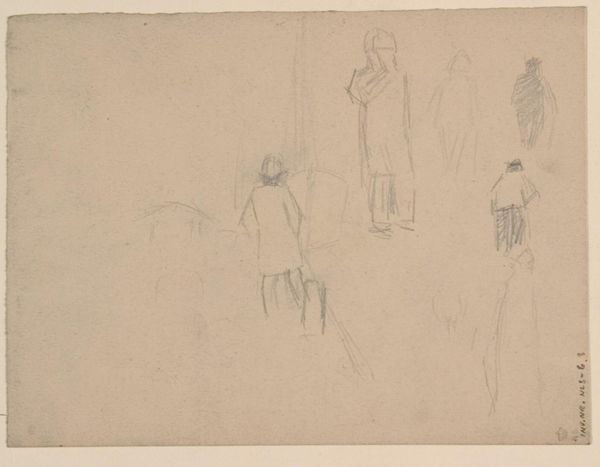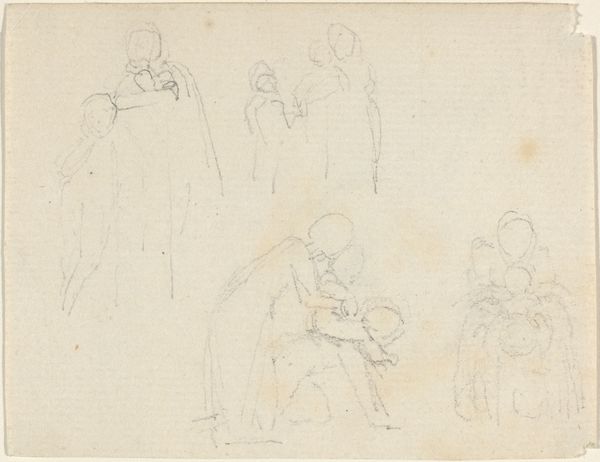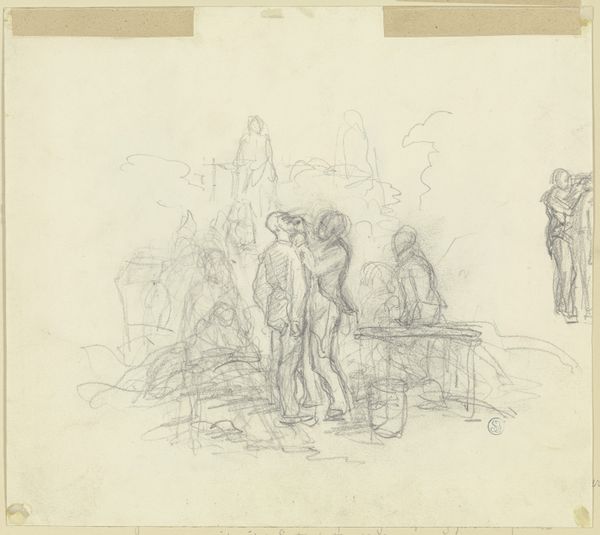
Studies of Two Groups of Turkish Figures 1800 - 1841
0:00
0:00
drawing, print, pencil, pen
#
portrait
#
drawing
# print
#
pen sketch
#
pencil sketch
#
pen-ink sketch
#
pencil
#
orientalism
#
pen
Dimensions: sheet: 9 7/16 x 15 11/16 in. (24 x 39.9 cm)
Copyright: Public Domain
Curator: Sir David Wilkie, known for his genre scenes and portraits, created this sheet of Studies of Two Groups of Turkish Figures sometime between 1800 and 1841. It’s currently housed at The Met. What do you see in it, initially? Editor: Well, immediately, it feels unfinished, like catching glimpses of something that hasn’t fully materialized. Ghostly figures. Are we invited to imagine what could be, or what used to be? Curator: Perhaps both! The quick pencil and pen strokes lend an immediacy, like Wilkie was rapidly capturing a fleeting scene, or perhaps a memory. You know, the composition itself is quite striking; two distinct groups, each rendered with varying degrees of detail. One almost dissolving into the paper itself. Editor: Yes, the contrast is powerful. And that "orientalist" tag is impossible to ignore here. It speaks volumes about the gaze, the power dynamics at play during that era, the exoticism projected onto other cultures, what do we see in this lens, the representation, versus the actual lived reality? Curator: Exactly! Wilkie did travel to Turkey; in fact he tragically died on the return journey. This sketch sheet feels like a glimpse into his artistic process. A collection of sketches, made either during his travels, or afterwards, recalling the trip from memory. Editor: Right, so the ‘authentic’ is mediated through Wilkie’s own cultural framework and artistic interpretation. How much is a reflection of genuine cultural understanding versus colonial fantasy? And those stylistic choices – the soft pencil versus the sharp ink – does it suggest different levels of engagement, of understanding, or maybe of comfort? Curator: The lighter sketching might have been done earlier as very fast studies. It really makes me wonder what struck him – what he was eager to record for a future, larger, painting. Were these just notes or an important memory he wanted to preserve for his lifetime? It’s quite intimate to see him in this state. Editor: It's a complex intimacy. Because even in this rough form, the act of sketching implies a degree of observation and categorization. Even the attempt to capture "reality" is always loaded with intent. Are we admiring artistry or complicity with systems of power? Curator: I see that tension. The beauty of the line versus the problematic context. Perhaps this work invites us to hold both in our minds at once, as we leave it. Editor: Indeed, perhaps the greatest challenge, is in facing the legacy of such artworks in an ongoing dialogue, and consider not just *what* is depicted but *why* and *how*.
Comments
No comments
Be the first to comment and join the conversation on the ultimate creative platform.

